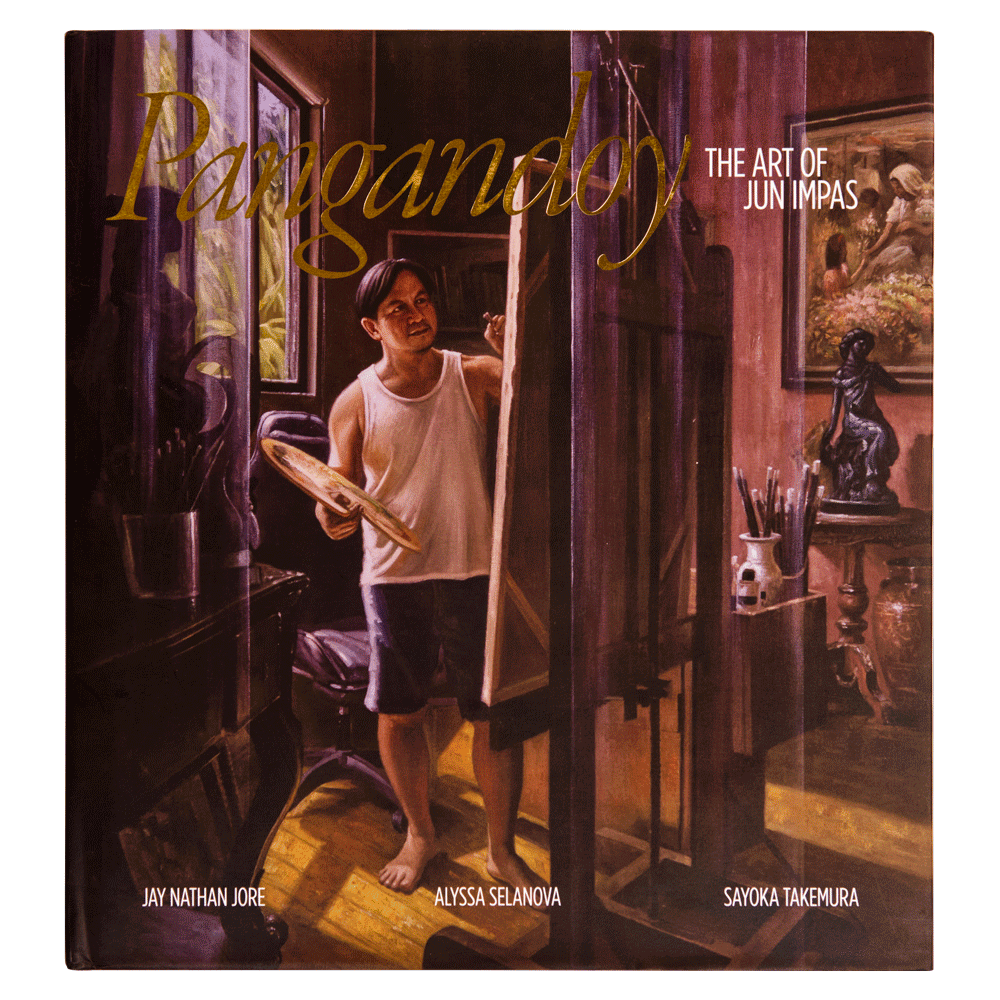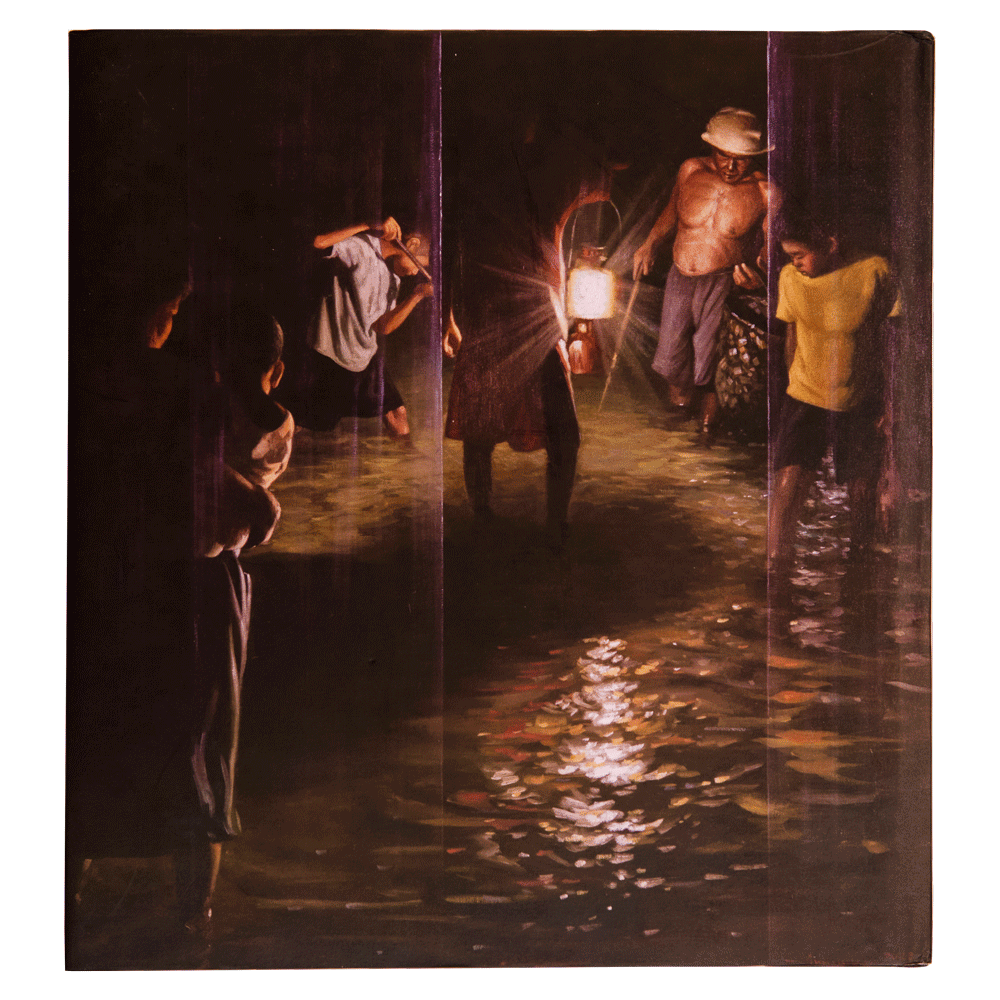

Pangandoy: The Art of Jun Impas
Marking the 25th year of Florentino "Jun" Impas, Jr.'s professional art career, "Pangandoy: The Art of Jun Impas" tells his inspiring story. Armed with persistent dreams and strong determination, the son of a fisherman achieved the stature of a realist master, bringing the traditions of Bisaya Realism to the forefront of Philippine contemporary art. The book's title is lifted from Impas' 1998 debut solo exhibition in Cebu, "Pangandoy", and its release coincides with the show's silver anniversary.
The monograph chronicles the remarkable narrative of dreaming for a better life and working devotedly towards fulfilling this vision. It begins with Impas' childhood days in a fishing village on Dinagat Island and then his youthful years in Surigao City, where he discovered his exceptional skills in signage making. Then, in his 20s, he made the pivotal return to his place of birth, Cebu and found himself thriving and progressing as an artist amidst trials and periods of self-doubt. At the same time, he accomplished important milestones in his quest for artistic merit and success, which paved the way to locate his artistic practice in the traditions of realism in the Philippines.
To illustrate the breadth of his body of works, "Pangandoy" explores the artist's painterly approach to capturing the effects of nature, the solemnity of ordinary life, the vitality of the human figure, the assuring light of faith, and the dynamism of Filipino culture. A selection of Impas' exhibitions are documented inside the title's 234 pages. They prove his commitment to a culturally engaged practice and promoting communities, values, customs, and traditions across the country. Furthermore, as one of the most sought-after portraitists of his generation, Impas' exemplary portraits are re-introduced and revisited, giving the audience a glimpse of his artistic prowess and mastery of techniques.
In presenting the story of Florentino "Jun" Impas, Jr., the monograph "Pangandoy: The Art of Jun Impas" hopes to bring vital attention to artists working in the regions and reassert their essential contribution to the history and making of Filipino art.
Text by Jay Nathan T. Jore